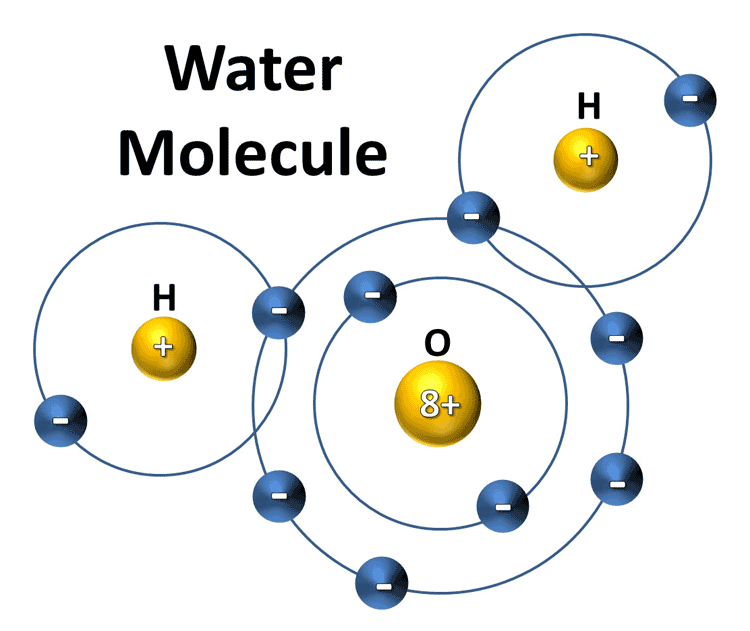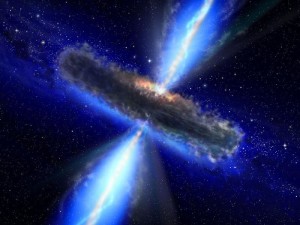Jan
12
Water, Water Everywhere…
“Water is the driving force in nature.” — Leonardo da Vinci
We often hear claims that the human body is “mostly water”, even as high as 90%. But the truth is a bit more modest. According to Dr. Anne Marie Helmenstine,  “The average adult human body is 50-65% water, averaging around 57-60%. The percentage of water in infants is much higher, typically around 75-78% water, dropping to 65% by one year of age.” Still, that’s a lot, especially since we seem pretty solid, most of the time.
“The average adult human body is 50-65% water, averaging around 57-60%. The percentage of water in infants is much higher, typically around 75-78% water, dropping to 65% by one year of age.” Still, that’s a lot, especially since we seem pretty solid, most of the time.
If we’re talking proportions according to volume or mass, the Earth is actually water-poor as planets go — less than one-tenth of one percent by volume and roughly 0.02% of its mass. But, as for the Earth’s surface, geologists tell us that about 70% of it is covered by water, with nearly 97% of that being saline (i.e., salt-water). We’ve all heard how important water is for life (though sometimes the many other necessities for life are ignored or downplayed). In fact, life needs more than the mere presence of water in order to flourish. There must be a stable (and intricately-balanced) water cycle, including water in liquid, solid, and gaseous forms. As Dr. Hugh Ross has pointed out,
“Advanced life can survive only if the evaporation and precipitation average between 25 and 60 liquid water inches per year, and only if snow and rain condense in the right proportions.
For advanced life to be well supported by an abundance of lower life-forms and a diversity of species, the rainfall must vary from one geographical area to another. The range must fall between about 2 inches and 600 inches per year — not just for a few millennia, but for a few billion years.”
Now, let’s think much bigger…. What percentage of the universe is composed of water? We don’t often consider this, since we usually think of the universe as being mostly the vacuum of space, with a few planets made of rock and/or gas scattered in. But, scientists have made discoveries that indicate there is a whoooooole lot of water out there. As hydrologist Dr. Vincent Kotwicki, in his paper “Water in the Universe”, writes:
“Water appears to be one of the most abundant molecules in the Universe. It dominates the environment of the Earth and is a main constituent of numerous planets, moons and comets. On a far greater scale, it possibly contributes to the so-called ‘missing mass’ [i.e., dark matter] of the Universe and may initiate the birth of stars inside the giant molecular clouds.”
I think Dr. Kotwicki is confused about dark matter, since water is composed of “luminous matter”, whereas the hypothetical “dark matter” is dark because “it neither emits nor absorbs light or other electromagnetic radiation at any significant level.” Nevertheless, it is generally recognized that water is widespread throughout the universe in all its forms. Still, that bit about water initiating the birth of stars is interesting….
Several weeks ago, I found myself in a Facebook exchange with a young woman who was quite enthusiastic in her (I think, new-found) hobby/”calling” of science apologetics. In the course of our discussion, we both mentioned how water (H2O) had quite amazing properties. Then she related her developing theory that God created — or, I guess, formed — stars from water. I did not follow her reasoning, but it involved a theme or pattern she saw in the importance and pervasiveness of water in both Scripture and nature. My knowledge of stellar evolution is admittedly rather limited, but I was not aware of any such theories in mainstream cosmology. (Not that I necessarily would be.) It seems that the inspiration for her hypothesis was a somewhat offhanded remark made in an article of otherwise solid-sounding information. My final comment on the matter to her was:
“I’m curious what the author had in mind with that one-liner about a ‘big enough’ amount of water ‘could become its own star’. I suppose its mass would soon cause it to begin nuclear fusion and burn like any other star. I’ve never heard of any ginormous balls of water having been found floating in space in any time in history, but I could be wrong. (And, yes, I believe astronomers look back in time.) And, technically, it wouldn’t be ‘water’ anymore.”
(If any of my readers is knowledgeable in this area, please enlighten us how this might work. Also, my last sentence above was a reference to liquid water, but that might not have been a fair restriction.)
As it happened, a few days later I came across an article published by NASA back in July 2011 titled, “Astronomers Find Largest, Most Distant Reservoir of Water”. The discovery in question was an enormous quasar, dubbed APM 08279+5255, over 12 billion light-years from Earth. (That means there were galaxies giving birth to stars a billion years earlier than previously thought.) Remember, a quasar is an incredibly bright/energetic “quasi-stellar radio source”, which results as the supermassive black hole at the center of a galaxy feeds off of the disk (aka torus) of gas & dust that surrounds it. This particular quasar has a black hole 20 billion times more massive than our Sun and puts out as much energy as a thousand trillion suns! More to the point and quite atypically, water vapor is distributed around the black hole in a gaseous region hundreds of light-years in diameter. Thanks to the radiation, the gas is about -63° F, which is quite warm by astronomical standards. It is also unusually dense. (The article is fairly brief but gives a few more details, if you’re interested.)
Okay, okay. How much water are we talking about here, you ask? The equivalent of 140 trillion times all the water in Earth’s oceans! [Cue a thousand jaws dropping….]
“The environment around this quasar is very unique in that it’s producing this huge mass of water,” said Matt Bradford, lead scientist for one of the two teams that discovered it. “It’s another demonstration that water is pervasive throughout the universe, even at the very earliest times.”
Measurements indicate there is (or, at least, was) enough gas to feed the black hole for a long time, but speculation is that “some of the gas may end up condensing into stars or might be ejected from the quasar.” Fascinating, eh? Not exactly a “ginormous ball of water”, let alone one turning into a star. But, quite interesting, nonetheless.
















